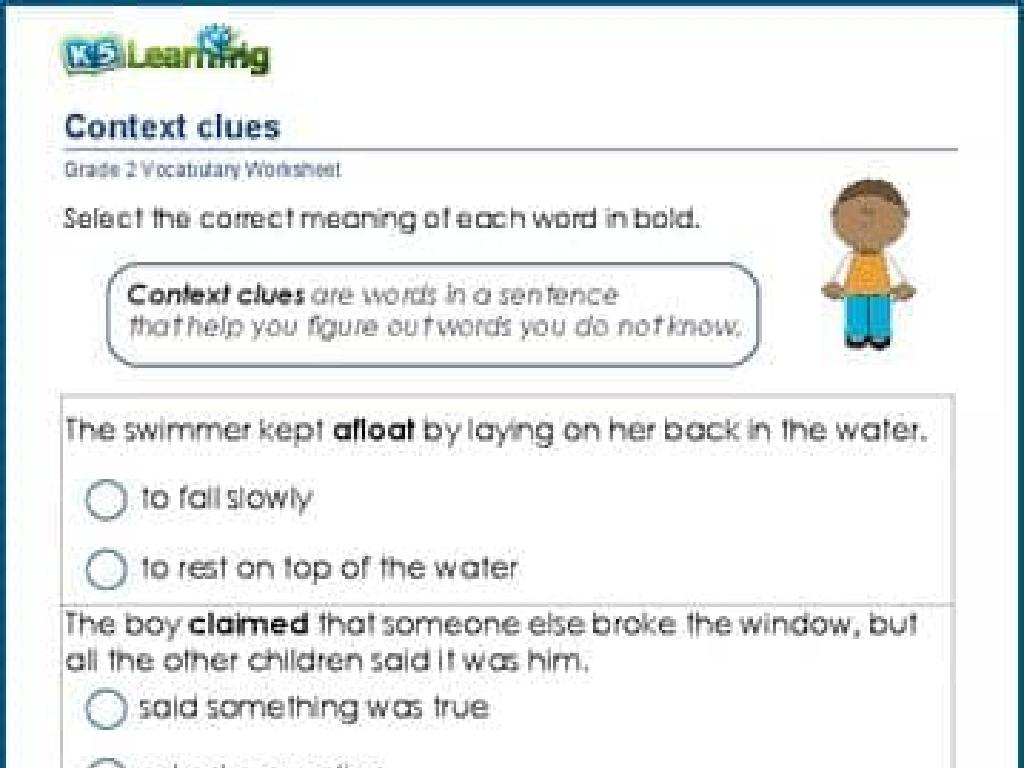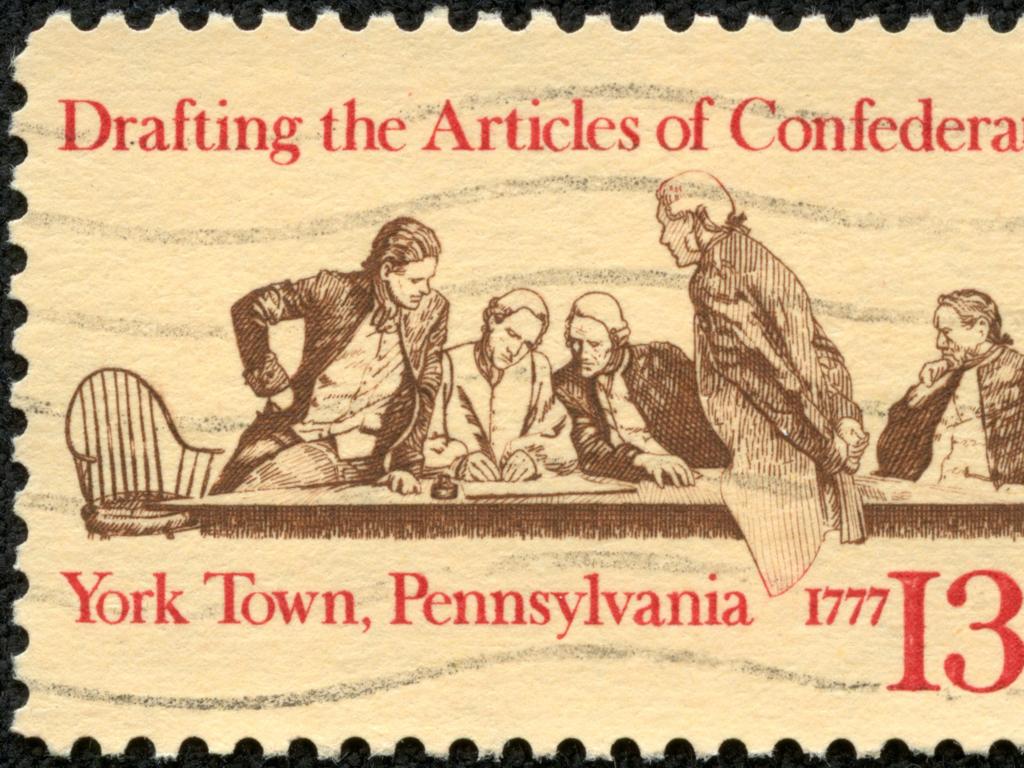Irrational Numbers On Number Lines
Subject: Math
Grade: Eighth grade
Topic: Rational And Irrational Numbers
Please LOG IN to download the presentation. Access is available to registered users only.
View More Content
Introduction to Rational and Irrational Numbers
– Rational vs. Irrational Numbers
– Rational numbers can be expressed as a fraction, while irrational cannot.
– Defining Rational Numbers
– Rational numbers are quotients of integers like 1/2, 3/4, or 0.75.
– Exploring Irrational Numbers
– Irrational numbers cannot be written as simple fractions, e.g., 2 or À.
– Visualizing on a Number Line
|
Begin the lesson by explaining the difference between rational and irrational numbers. Rational numbers are any numbers that can be expressed as a fraction or ratio of two integers, where the denominator is not zero. Examples include 1/2, 3/4, and decimals that terminate or repeat. Then, introduce irrational numbers as numbers that cannot be written as a simple fraction, such as the square root of 2 or pi (À). These numbers have non-repeating, non-terminating decimal expansions. Use a number line to show how both rational and irrational numbers are represented on it, highlighting that irrational numbers fill in the ‘gaps’ between rational numbers. This visual representation will help students understand the concept of density in the number system.
Characteristics of Irrational Numbers
– Defining irrational numbers
– Numbers that cannot be expressed as a fraction of two integers
– Common examples: Pi, 2
– Pi (À) is about 3.14159…, 2 is about 1.41421…
– Non-repeating, non-terminating
– Decimals that go on forever without a repeating pattern
– Irrational numbers on the number line
|
This slide introduces students to the concept of irrational numbers, which are numbers that cannot be written as a simple fraction, meaning they are not the ratio of two integers. Examples include Pi (À), which is the ratio of a circle’s circumference to its diameter, and the square root of 2, which is the length of the diagonal of a square with sides of one unit. Emphasize that these numbers have non-repeating, non-terminating decimal expansions, which is a key characteristic of irrational numbers. Show how to represent irrational numbers on a number line by approximating their value. This can be a challenging concept, so use visual aids and allow students to explore with hands-on activities like measuring the circumference and diameter of circles or creating square roots with squares.
Rational Numbers on the Number Line
– How to plot rational numbers
– Place fractions and decimals at precise points
– Understanding number line intervals
– Intervals represent the distance between numbers
– Exploring the density property
– Rational numbers are dense, meaning there are infinitely many between any two numbers
|
This slide introduces students to the concept of plotting rational numbers on a number line, which includes both fractions and decimals. Emphasize the precision required in placing these numbers at their correct positions. Discuss the concept of intervals, explaining that they represent the space between numbers on the line. Highlight the density property of rational numbers, which states that there are infinitely many rational numbers between any two points on the number line, no matter how close these points are. This concept can be challenging, so consider using visual aids or interactive number lines to demonstrate. Encourage students to think of examples and ask questions to ensure understanding.
Irrational Numbers on the Number Line
– Estimating irrational numbers
– Estimate the position of an irrational number like 2 on a number line
– Plotting challenges
– Irrational numbers cannot be plotted exactly due to their non-repeating nature
– Approximating with rationals
– Use nearby rational numbers to find a close approximation
– Practice estimation techniques
|
This slide introduces students to the concept of irrational numbers and their representation on the number line. Begin by explaining that irrational numbers, such as square roots of non-perfect squares, cannot be expressed as a simple fraction. Discuss the difficulty of plotting these numbers precisely due to their infinite, non-repeating decimal expansion. Teach students how to use rational numbers they are familiar with to estimate the position of an irrational number on the number line. For example, since 2 is between 1 and 2, students can use 1.4 as an approximation. Encourage students to practice this technique with different irrational numbers and to understand that these are estimates, not exact positions.
Rational vs. Irrational Numbers
– Both are real numbers
– Rational numbers as fractions
– Ratios of integers, e.g., 1/2, 3/4, 5
– Irrational numbers cannot be fractions
– Non-repeating, non-terminating decimals, e.g., À, 2
– Both essential in the real number system
– Real numbers include both rational and irrational numbers
|
This slide aims to compare and contrast rational and irrational numbers. Both types are part of the real number system, which is the foundation of algebra. Rational numbers can be expressed as fractions or ratios of integers, including whole numbers and repeating or terminating decimals. In contrast, irrational numbers are non-repeating, non-terminating decimals that cannot be accurately represented as fractions. Examples include the square root of 2 and the number À. Understanding the distinction between these types of numbers is crucial for students as they explore number lines and algebraic concepts. Encourage students to think of examples of each and consider how they are represented on a number line.
Real-life Examples of Irrational Numbers
– Pi in Geometry
– Pi (À) is used to calculate circle properties, like circumference and area.
– Nature and Art
– Fibonacci sequence in nature, golden ratio in art.
– Practical Applications
– Engineering, science, and finance use irrational numbers for precision.
|
This slide aims to show students that irrational numbers are not just theoretical concepts but have practical applications in everyday life. Pi (À) is a classic example used in geometry to determine the circumference and area of circles. In nature, the Fibonacci sequence, which is closely related to the golden ratio (an irrational number), can be observed in the arrangement of leaves, flowers, and shells. The golden ratio itself is often used in art and architecture to achieve aesthetically pleasing compositions. Furthermore, irrational numbers are used in various fields such as engineering, science, and finance to achieve precise calculations and measurements. Encourage students to think of other examples where they might encounter irrational numbers outside the classroom.
Class Activity: Estimating Irrational Numbers
– Group activity: Estimating & plotting
– Measure and approximate Pi
Use measuring tapes to find a length close to Pi units
– Plot Pi on a number line
Mark the approximate point for Pi on a classroom number line
– Discuss findings in class
|
This interactive group activity is designed to help students understand irrational numbers by estimating and plotting the value of Pi on a number line. Divide the class into small groups and provide each with a measuring tape. Students will use the tape to find a length that is approximately 3.14 units long and then plot this length on a large number line drawn on the classroom floor or a long paper roll. After the activity, lead a class discussion where students share their methods, results, and observations. Discuss the challenges of plotting irrational numbers and the concept of approximation. Possible variations for the activity could include estimating other irrational numbers like the square root of 2, or comparing the precision of different groups’ measurements.
Wrapping Up: Rational & Irrational Numbers
– Recap: Rational vs. Irrational Numbers
– Rational numbers can be expressed as a fraction, while irrationals cannot.
– Significance of Number Types
– Grasping these concepts is crucial for advanced math topics.
– Operations with Irrationals Preview
– Next, we’ll explore adding, subtracting, multiplying, and dividing irrational numbers.
|
As we conclude today’s lesson, it’s important to reinforce the distinction between rational and irrational numbers. Rational numbers, such as fractions and whole numbers, can be located precisely on a number line, whereas irrational numbers, like the square root of 2, cannot be expressed as a simple fraction and their exact position on the number line is more complex. Understanding these differences is foundational for students as they progress in mathematics, particularly as they begin to perform operations with irrational numbers. In our next lesson, we will delve into how to work with irrational numbers in various arithmetic operations, building on the knowledge that students have gained today about number types.
Homework: Exploring Rational & Irrational Numbers
– Solve practice problems on numbers
– Focus on both rational and irrational numbers
– Find an irrational number around you
– Look for real-world examples, like À in circles
– Review today’s lesson for a quiz
– Go over notes, homework, and classwork
– Document your findings and solutions
|
This homework assignment is designed to reinforce the concepts of rational and irrational numbers. Students should complete practice problems to solidify their understanding of both types of numbers. Encourage them to find and share examples of irrational numbers from their daily environment, such as the use of pi (À) when dealing with circles. This will help them see the relevance of irrational numbers in real life. Additionally, students should review the material covered in today’s lesson to prepare for the upcoming quiz. This review can include going over class notes, previous homework, and any classwork exercises. The goal is to ensure students are comfortable with identifying and working with rational and irrational numbers on a number line.






